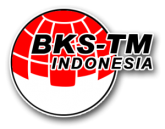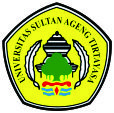Viscous Damping Coefficient Measurement System Using Incremental Optical Encoder
Abstract
Keywords
Full Text:
PDFReferences
Dongshan Li, Ning Kong, Boyang Zhang, Bo Zhang, Ruishan Li, Qingdong Zhang, “Comparative study on the effects of oil viscosity on typical coatings for automotive engine components under simulated lubrication conditions,”, Diam Relat Mater, vol. 112, Feb. 2021, doi: 10.1016/j.diamond.2020.108226.
Khalid A. Sukkar, Abullhassan A. Karamalluh, Thulfiqar N. Jaber, “Rheological and Thermal Properties of Lubricating Oil Enhanced by the Effect of CuO and TiO2 Nano-Additives,”, Al-Khwarizmi Engineering Journal, vol. 15, no. 2, pp. 24–33, May 2019, doi: 10.22153/kej.2019.12.002.
Václav Štěpina, Václav Veselý, “Chapter Two The General Properties of Lubricants,” in Lubricants and Special Fluids, 1st ed., vol. 23, Tribology Series, 1992, pp. 9–124. doi: 10.1016/S0167-8922(08)70349-3.
Vojtech Špeťuch, Jozef Petrík, Eva Grambálová, Dávid Medveď, Pavol Palfy, “The capability of the viscosity measurement process,”, Acta Metallurgica Slovaca, vol. 21, no. 1, pp. 53–60, Mar. 2015, doi: 10.12776/ams.v21i1.471.
Howard A. Barnes, “An examination of the use of rotational viscometers for the quality control on non-newtonian liquid products in factories,”, Applied Rheology, vol. 11, no. 2, pp. 89–101, 2001, doi: 10.1515/arh-2001-0006.
S. Aruna, G. Shantha, “ANALYSIS ON DIFFERENT TYPES OF VISCOMETERS, DESIGN, MATERIALS AND TECHNOLOGY,”, Turkish Journal of Computer and Mathematics Education, vol. 11, no. 3, 2020.
Samuel Bridges, Leon Robinson, “Centrifuges,” in A Practical Handbook for Drilling Fluids Processing, 1st ed., Elsevier, 2020, pp. 475–488. doi: 10.1016/B978-0-12-821341-4.00021-X.
Yunus A. Çengel, John M. Cimbala, “Approximate solutions of the Navier-Stokes equation,” in Fluid Mechanics: Fundamentals and Applications, 1st ed., McGraw Hill, 2006.
George C. King, “ The damped harmonic oscillator,” in Vibrations and Waves, 1st ed., John Wiley and Sons, Ltd, 2009, pp. 33–47.
Peter Alexander, Evi Indelicato, “A semiempirical approach to a viscously damped oscillating sphere,”, Eur J Phys, vol. 26, no. 1, pp. 1–10, Jan. 2005, doi: 10.1088/0143-0807/26/1/001.
Sohaib Shamim, Wasif Zia, Muhammad Sabieh Anwar, “Investigating viscous damping using a webcam,”, Am J Phys, vol. 78, no. 4, pp. 433–436, Apr. 2010, doi: 10.1119/1.3298370.
J. E. Escalante-Martínez, J. F. Gómez-Aguilar, C. Calderón-Ramón, L. J. Morales-Mendoza, I. Cruz-Orduña, J. R. Laguna-Camacho, “Experimental evaluation of viscous damping coefficient in the fractional underdamped oscillator,”, Advances in Mechanical Engineering, vol. 8, no. 4, pp. 1–12, Apr. 2016, doi: 10.1177/1687814016643068.
Sankar Kumar Roy, A. R. Mohanty, “Use of rotary optical encoder for firing detection in a spark ignition engine,”, Measurement (Lond), vol. 98, pp. 60–67, Feb. 2017, doi: 10.1016/j.measurement.2016.11.026.
A. A. Kadhum, M. M. Abdulhussein, “WITHDRAWN: Implementation dc motor as servomotor by using arduino and optical rotary encoder,”, Mater Today Proc, Apr. 2021, doi: 10.1016/j.matpr.2021.03.576.
E. Ike, “The study of viscosity-temperature dependence and activation energy for palm oil and soybean oil,”, Global Journal of Pure and Applied Sciences, vol. 25, no. 2, pp. 209–217, Sep. 2019, doi: 10.4314/gjpas.v25i2.11.
Oki Gunawan, Yudistira Virgus, “The one-dimensional camelback potential in the parallel dipole line trap: Stability conditions and finite size effect,”, J Appl Phys, vol. 121, no. 13, Apr. 2017, doi: 10.1063/1.4978876.
J. Happel, H. Brenner, “Axisymmetrical flow,” in Low Reynolds Number Hydrodynamics: With Special Applications to Particulate Media, Martinus Nijhoff Publishers, 1983, pp. 96–157.
G. Rakesh Chowdary, T V Rama Krishna, M. Sai Pavan, M. Uday Venkata Mahesh, P.Tejaswi, D. Koushik Reddy, “Design and Performance Evaluation of D-Flip-Flop using Various Technology Nodes,”, International Journal of Emerging Trends in Engineering Research, vol. 8, no. 5, pp. 1996–2001, May 2020, doi: 10.30534/ijeter/2020/86852020.
Babu. M, Sathish Kumar G. A, “IN-DEPTH SURVEY ON XOR GATE DESIGN,”, JOURNAL OF CRITICAL REVIEWS, vol. 7, p. 2020, 2020, doi: 10.31838/jcr.07.18.235.
Chevron Marine Products LLC, “Viscosity classifications,” marine lubricants information bulletin 6, 2019.
Victoria Oguntosin, Ayoola Akindele, “Design of a joint angle measurement system for the rotary joint of a robotic arm using an Incremental Rotary Encoder,”, J Phys Conf Ser, vol. 1299, no. 1, p. 012108, Aug. 2019, doi: 10.1088/1742-6596/1299/1/012108.
D. Seborg, T. Edgar, D. Mellichamp, F. Doyle, “PID controller design, tuning, and troubleshooting,” in Process Dynamics and Control , 3rd ed., John Wiley & Sons, Inc, 2011, pp. 211–230.
DOI: http://dx.doi.org/10.36055/fwl.v0i0.19525
Refbacks
- There are currently no refbacks.







